Climate risk scores on real estate listings are having an impact on prices and realtors are complaining. But who should pay for these losses?
[Read more…] about Who should pay?Climate impacts
Lil’ NAS Express
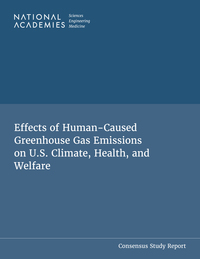
The fast-tracked update of the 2009 EPA Endangerment finding from the National Academies for Science, Engineering and Medicine (NASEM), has now been released.
[Read more…] about Lil’ NAS ExpressDOE CWG Report “Moot”?
Somewhat breaking news. A court filing (from 9/4) from DOE has noted that the Climate Working Group has been disbanded (as of 9/3). This was done to make the EDF/UCS lawsuit moot, but it also means that DOE is withdrawing the report, no-one will respond appropriately to the comments submitted, and (possibly) it becomes irrelevant for the EPA reconsideration of the Endangerment Finding.
What a farce.
Update: Via Andy Revkin, the EDF/UCS’s blistering response to the DOE filing. Pass the popcorn.
Climate Scientists response to DOE report
As we’ve mentioned, Andrew Dessler and Robert Kopp have been coordinating a scientific peer review of the DOW ‘CWG’ Critique of Climate Science. It is now out.
[Read more…] about Climate Scientists response to DOE reportCritiques of the ‘Critical Review’
The first somewhat comprehensive reviews of the DOE critical review are now coming online.
[Read more…] about Critiques of the ‘Critical Review’Are direct water vapor emissions endangering anyone?
In the EPA EF reconsideration document there is a section on p62 where they attempt to make the argument that the CO2 endangerment finding would also apply to direct water vapor emissions to the atmosphere, which is (according to them) obviously absurd. But both claims are bogus.
[Read more…] about Are direct water vapor emissions endangering anyone?The Endangerment of the Endangerment Finding?
The EPA, along with the “Climate Working Group” (CWG) of usual suspects (plus Judith Curry and Ross McKitrick) at DOE, have just put out a document for public comment their attempt to rescind the 2009 Endangerment Finding for greenhouse gas emissions.
[Read more…] about The Endangerment of the Endangerment Finding?National Climate Assessment links
For some reason, it has become hard to locate the various National Climate Assessments (NCAs) that have been produced by the USGCRP over the decades (and it’s pretty hard to find the USGRCP as well…). However, the reports are still accessible if you know where to look. So for future reference, here are all the links (and we’ve downloaded the pdfs locally so that they will always be available here).
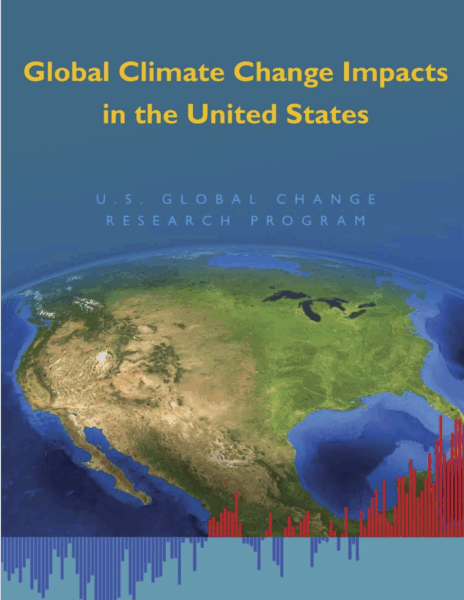
NCA1 (2000)
- Full report (via the internet archive) (via gov archive) (local pdf)
NCA2 (2009)
- Full report (via the internet archive) (via gov archive) (local pdf)
NCA3 (2014)
- Full Report (via the NOAA library) (local pdf)
- Climate Science Supplement (via the internet archive) (local pdf)
NCA4 (2017)
- Volume 1 Climate Science Special Report (via the NOAA library) (local pdf)
- Volume 2 Impacts, Risks, and Adaptation in the United States (via the NOAA Library) (local pdf)
NCA5 (2023)
- The NCA5 Atlas (via ESRI)
- Full report (via the NOAA Library) (local pdf)
NCA6
There is no ongoing NCA6 process, even though it is mandated by Congress to be completed over the next few years. We’ll let you know if that changes.
The most recent climate status

The Arctic Council’s Arctic Monitoring and assessment Programme (AMAP) recently released a Summary for PolicyMakers’ Arctic Climate Change Update 2024.
[Read more…] about The most recent climate statusAndean glaciers have shrunk more than ever before in the entire Holocene
Glaciers are important indicators of climate change. A recent study published in the leading journal Science shows that glaciers in the tropical Andes have now retreated further than at any other time in the entire Holocene – which covers the whole history of human civilisation since the invention of agriculture. These findings are likely to resonate beyond the scientific community, as they strongly support the lawsuit filed by a Peruvian farmer against the energy company RWE, which has returned to court this week.
Paleoclimatologists can determine how long bedrock beneath a glacier has been covered by ice using measurements of specific isotopes. When rock surfaces are exposed, isotopes such as carbon-14 and beryllium-10 form due to bombardment by cosmic radiation. If, however, the rock is covered by an ice sheet, it is shielded from this radiation, and these unstable isotopes gradually disappear through radioactive decay (with half-lives of 5,700 and 1.4 million years, respectively). This method, known as cosmogenic radionuclide dating, has been well-established for decades. I first encountered it myself 23 years ago during an excursion with glacier experts to New Zealand’s Southern Alps.
The new study applied this method to examine several glaciers in the tropical Andes (see Fig. 1).
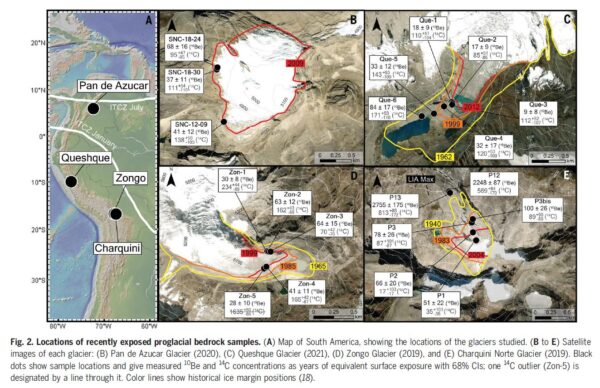
In rock samples collected at the edges of the glaciers, researchers found isotope concentrations close to zero. From this, they conclude that these rocks must have remained covered by ice throughout the entire Holocene, shielding them from cosmic radiation. This indicates that these glaciers are very likely smaller today than at any point in at least the last 11,700 years.
This finding aligns with several previous studies showing that temperatures in the tropical Andes have never been warmer during the Holocene than they are today. For instance, reconstructions of the glacier margin of the Quelccaya Ice Cap demonstrate that it has not been smaller than today at any time in at least the last 7,000 years. Temperature reconstructions based on proxy data further support this conclusion.
Global Warming Means Global Glacier Retreat
The Andes are not an exception: according to current research, global average temperatures today are very likely higher than at any other point during the entire Holocene. Given that an ice age lasted for more than 100,000 years before the Holocene, today’s temperatures are probably the highest experienced in about 120,000 years. This unprecedented warming, which began in the 19th century and has so far reached around 1.3–1.4°C, is almost entirely driven by human activity – primarily the burning of fossil fuels. According to the Intergovernmental Panel on Climate Change (IPCC), natural factors have contributed very little to recent warming, probably even having a slightly cooling effect, due to declining solar activity since the mid-20th century (a fact reflected in the title of former RWE manager Fritz Vahrenholt’s book, Die kalte Sonne – The Cold Sun).
As a result, glaciers worldwide continue to lose mass (see Figure 2). In Germany, only four glaciers remain, following the disappearance of the Southern Schneeferner glacier in September 2022. Soon, there will be no glaciers left in Germany at all.
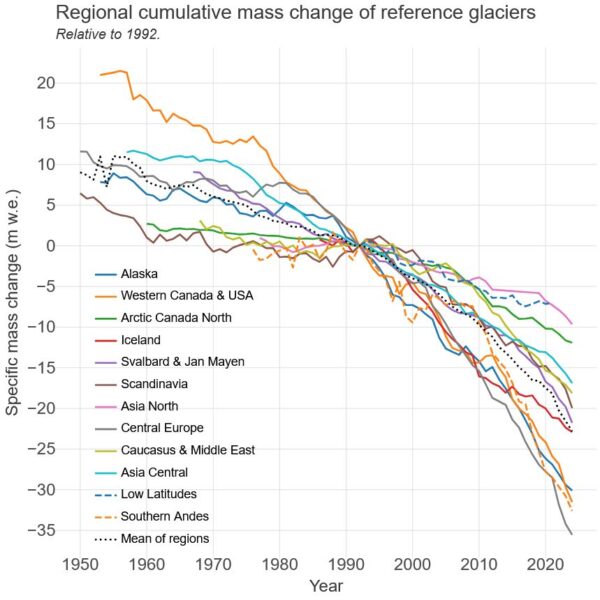
Implications for the RWE Case
The RWE case addresses, among other things, whether global warming caused by CO₂ emissions is responsible for the severe glacier melt, the substantial retreat of the glacier by approximately 1.5 km over the past 140 years and the thawing of permafrost above the city of Huaraz in Peru. A 2021 attribution study published in the respected journal Nature Geoscience has already conclusively demonstrated this connection; however, RWE appears to continue challenging these findings.
In this context, the new data from Gorin et al. are particularly relevant. The Queshque Glacier, now smaller than at any other time in at least the last 11,700 years, is located only 40 km from Huaraz, in the same mountain range as Lake Palcacocha (see Fig. 3).
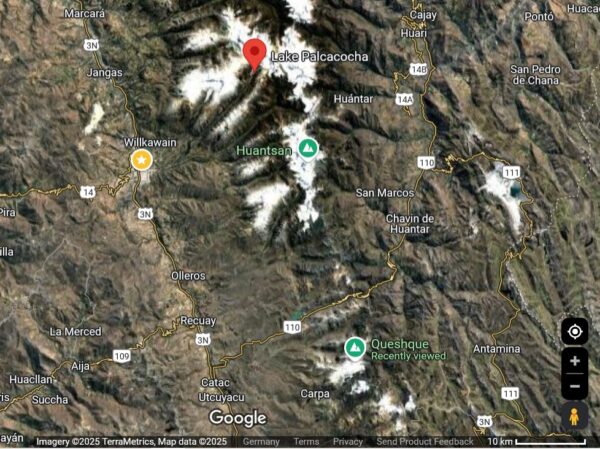
It is highly likely that local climate changes across this area differ minimally at most. Although average climate conditions can vary over short distances due to local topography, climate warming typically has a correlation radius of more than 1,000 km. Therefore, there is no meaningful difference in climate change effects between Queshque Glacier and Lake Palcacocha.
This region is already experiencing the most significant climate warming in the history of human civilisation. It will undoubtedly continue until the global economy achieves climate neutrality, essentially, net-zero CO₂ emissions.
In the RWE trial, the central issue will be whether, and to what extent, the city of Huaraz and the plaintiff would be affected by a glacier flood. A systematic analysis of past glacial lake outburst floods (GLOFs) in the region has examined 160 such events based on satellite imagery. The findings clearly identify the Andes around Huaraz as a hotspot for this risk (see Fig. 4).
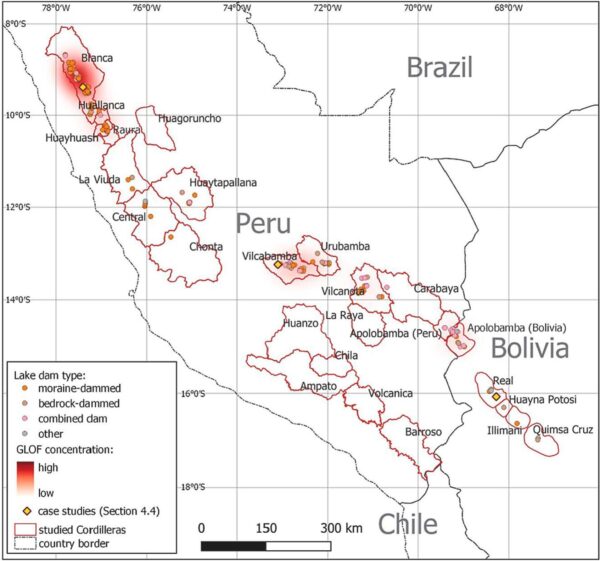
Huaraz is located at 9.5° south latitude within the high-risk zone marked in red. Source: Emmer et al. 2022.
Additionally, this study shows that the frequency of such floods has increased significantly since 1980 (see Fig. 5). Before 1980, there was only one year with more than two recorded GLOFs: 1970 due to a severe earthquake. However, there are now repeatedly years with 3, 4 or even 5 glacial lake outbursts.
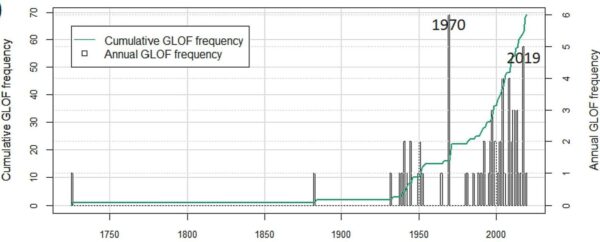
One thing is clear: given the existing research, it would be absurd to assume that the risk of a Lake Palcacocha outburst could be calculated based solely on historical data, without explicitly accounting for global warming caused by fossil fuels. Anyone who suggests that climate change is not happening in Huaraz – that there is no human fingerprint, and therefore no connection to RWE’s share of CO₂ emissions – may have their reasons for doing so. But the evidence clearly shows otherwise.